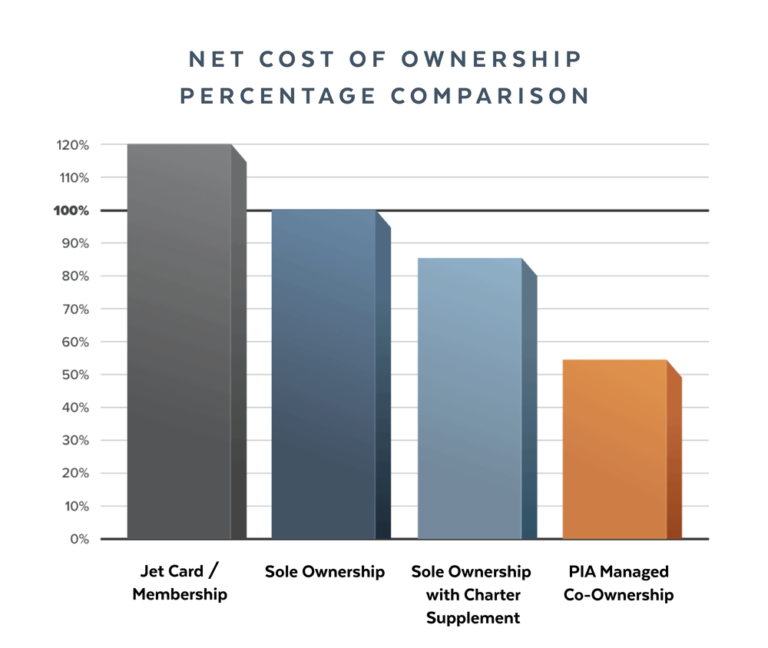
Jet Cards and Membership Programs. Is It Time To Move Up?
Prepaid jet cards and aircraft membership programs have been around for nearly 30 years. Each has proven to be a sensible way to access non-commercial air travel, especially for those new to private aviation. Known for providing on-demand access, convenience and reliability, these programs have become nearly ubiquitous, with over 250 in operation today.
But have jet cards and aircraft memberships reached a tipping point?
A recent survey by Private Jet Card Comparisons, which was reported by AIN Online, reveals that 43 percent of jet card and membership respondents are considering different private-aviation options. This is notable. Because historically, 90 percent have simply renewed their jet card or membership when it was time to re-up.
There’s no denying that these programs are the right choice for a great many travelers. However, it’s fair to question why so many are planning to move on. There’s not one simple answer, and programs are similar, but not identical. But generally speaking, there are market dynamics and often-heard customer grievances that may help shed some light on the situation.
EXPECTATIONS, COST AND COMPROMISE
Over 10,000 new clients have signed up for cards and memberships in the past two years. It’s likely that a significant portion of this resulted from the pandemic and the sorry state of airline travel. The sudden influx of users coincides with a rapid increase in demand that swiftly eroded aircraft availability. Flight cancellations, postponements and scheduling snafus, once a rarity in private aviation, became a thing.
Then came inflation and rising prices. And that, coupled with the incremental demand from new users outstripping aircraft availability, resulted in skyrocketing program fees in what was already a not-inexpensive proposition.
Understandably, escalating prices have motivated many users to take a critical look at the value proposition. Other line items invite scrutiny as well, including perks, V.I.P. events, and add-on fees not included in base rates. Regardless of whether the extras are built-in or tacked on, these clients are savvy. They know who is actually footing the bill.
The bottom line: A strikingly high percentage of jet card holders and program members have concluded that they no longer have the access or control they’ve come to expect, especially considering the price they are paying.
Ownership At Half the Cost
Many have already elected to explore options. Aircraft ownership is a consideration, but because of their limited need, whole ownership doesn’t always add up.
An increasing number of these travelers are turning to Partners In Aviation (PIA) to explore the benefits of co-ownership. The company’s program, PIA Managed Co-Ownership℠, matches two owners to one aircraft, and delivers the lowest net cost of ownership in the industry. The program is optimized for clients flying between 50 and 150 hours annually, which provides co-owners access that can accommodate every trip.
“We’ve seen a 25 percent increase in inquiries in the past few months, and a growing number of jet card and membership participants have decided to become PIA Co-Owners,” says PIA president Mark Molloy. “Our clients typically fly three to five days per month, meaning that each owner has access to their aircraft 25-plus days per month — at half the cost of whole ownership.”
Investment professional Gary Furikawa, a former jet card holder, is happy with his transition to co-ownership after relocating. “Once I moved back to Seattle and knew where I was going to be, it made sense to do something a little more than that,” he says. PIA matched Gary with another jet card client in his area looking for a better solution. Now they share the aircraft and operate at a lower net cost. Regarding access, Gary says, “So far, we’re batting a thousand.”
PIA service is turnkey. In addition to vetting and matching co-owners, PIA also provides the legal structure that allows each co-owner the access, autonomy and protection they require. Clients and their counsel work directly with PIA’s legal team through the process. Each co-owner remains autonomous in tax and title. PIA also counsels clients on aircraft selection and matches them with the appropriate aircraft manager and flight crew.
PIA clients are now operating across the U.S., coast to coast. The fleet comprises the full spectrum of turbine-powered aircraft, from single-engine turboprops to large corporate jets, from every major OEM.


